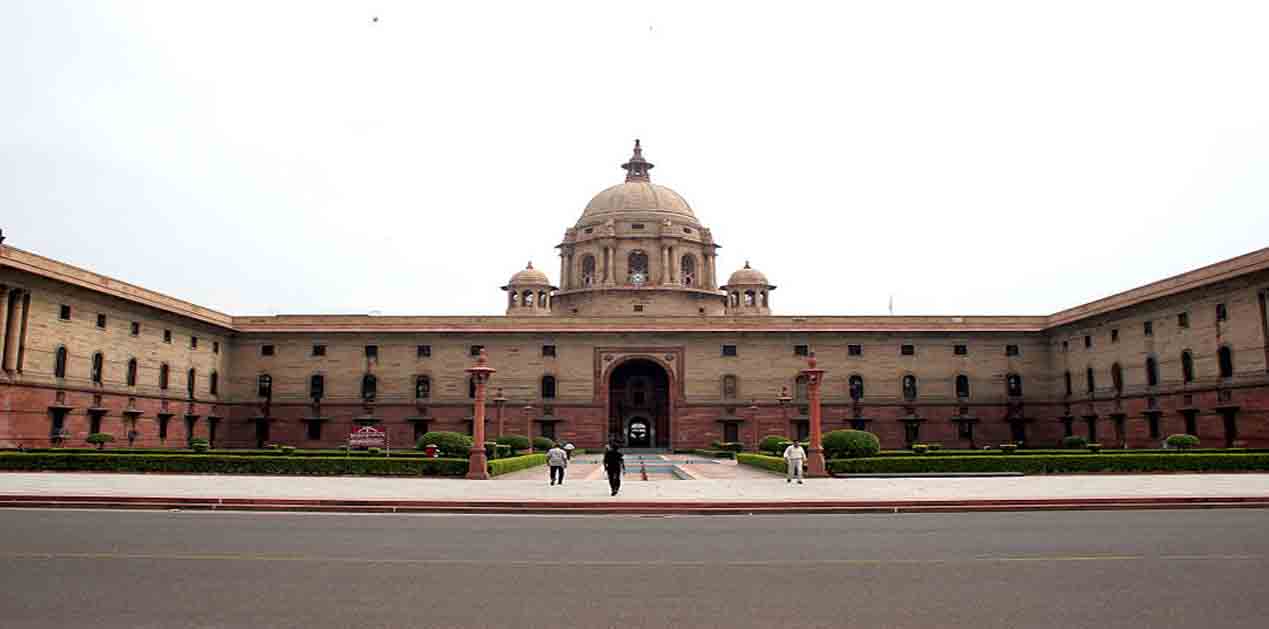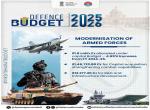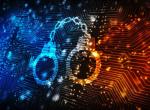The general features of the Defence Budget for 2018-19 are not different from those of the past. With a total outlay of Rs 4,04,365 cr, including Rs 1,08,853 cr towards pension liabilities, the defence outlay is 16.6 percent of the budgeted central government expenditure. Excluding pension, the defence services budget has a total outlay of Rs 2,79,305 cr, the revenue and capital outlays being Rs 1,85,323 and Rs 93,982 cr respectively. The year-on-year increase in outlay is just 7.7 percent, which is quite insignificant if inflation is factored in. The share of the defence services outlay in the GDP is on decline, the current share being 1.49 percent. The ratio between revenue and capital outlays is 66:34 indicating an ever widening gap. The mounting pension liabilities are also a matter of concern. Equally of concern is the gross inadequacy of the allocation for Border roads.
Revenue Allocation
After the budget presentation there have been reports on the yawning gap between what is projected by the services and what gets actually allocated. It appears that the three services had projected a total requirement of Rs 1,99,696 cr but the allocation is only Rs 1,65,166 cr, falling short of the projections by Rs 34,530 cr. The Army has the highest shortfall. As per the statements attributed to none other than its Vice-Chief, the Army is concerned that its allocations for operations and maintenance and ammunitions are more than Rs 9200 cr and Rs 5000 cr short of its requirements respectively. All the three services are concerned that their Goods and Service Tax (GST) burden has not been adequately addressed in the allocations. It is even reported that in the case of the Army, the nominal increase in allocation is not even sufficient to meet the increase in pay and allowances as well as the effect of inflation taken together. The other two services will also have similar constraints. In the recent past the services were delegated with substantial financial powers for procurement of stores for better operational preparedness. However, the services lament over the deficient allocations which will curtail their capacity to utilise the delegated powers.
Capital Allocation
The capital allocation of Rs 93,982 cr is about 8.7 percent more than the Revised Estimates (RE) of the current year (Rs 86,488 cr). Against a projected requirement of Rs 1,55,996 cr the allocation is Rs 82,590 cr i.e. 53 percent. As in the case of revenue expenditure, there is considerable gap between the projected requirements of the services and the allocation. It is reported that the capital outlay on acquisitions may not even be able to meet the committed liabilities which constitute the bulk of the capital expenditure on acquisitions. Thus the situation will not improve unless there is some significant addition during the RE stage.
Because of the general resource constraints, the increase in revenue expenditure including pay and allowances has also affected the capital allocation for the Army. As a result the ratio between revenue and the capital expenditure is getting skewed with the capital component undergoing a steady decline over the years. As per the Defence Budget 2017-18, the share of capital expenditure in the total allocation for the Army was just 17 percent and this had been steadily declining over the years. This is in contrast to the other two Services – Navy 51 percent and Airforce 55 percent. This will make the modernisation of equipment and fighting gear and induction of new technology more difficult than ever for the Army which has two thirds of its equipment in the vintage category. The decline in Army’s share of the capital budget and the increasing expenditure on pay and operational expenses has led to the widening gap between total revenue expenditure and capital expenditure in the overall Defence Services Estimate. The ratio now stands at 66:34 and the share of capital expenditure has been on a steady decline.
There is an urgent need to rebalance the defence budget. The report of the Shekatkar Committee set up by the Ministry of Defence (MoD) has shown the way forward but much more needs to be done to do away with duplication of work and bring about integration of the services. Defence reforms have to be pursued in right earnest. Defence lands (1.7 million acres), a very valuable asset for the services, need to be utilised creatively to raise resources for future infrastructure building. There has to be fresh thinking on the need to find innovative solutions for meeting the pension liabilities. It will be worthwhile to examine the feasibility of a dispensation like the New Pension Scheme which the Central Government had introduced for its civilian employees in the year 2004. However this alone is not going to facilitate the desired enhancement of the capital budget as per the requirements of modernisation.
In the clamour for scarce resources, differences between MoD, the Armed Forces and the Ministry of Finance (MoF) are nothing unusual. The MoF often cites the failure of the services to utilise fund fully at the end of the financial year and their unrealistic projections as reasons for restricting the allocations. However, there have been instances in the past when the MoF had put on hold clearances of files relating to procurements during the last quarter of the year, perhaps because of shortage of resources. Ambitious projection of funds based on the acquisition plans of each service will only lead to disappointment and frustration in the services. The syndrome of “asking for more” and its rebuff by the civilian administration also puts strain on civil-military relationship. Whatever be the truth, it is to be appreciated that the current incrementalism in defence budgeting is out of tune with the scale, urgency and magnitude of the demands of a comprehensive, time bound defence modernisation programme.
The Long Term Integrated Perspective Plan (LTIPP) which documents the future direction of the acquisition programme of each service and lays down the road map for technology upgradation is often described as a wish list far too unaffordable considering the resource constraints. While this may be true, it is always possible for the services to prioritise their requirements with due regard to the threat perceptions and the resource constraints. Lt Gen D.S. Hooda, the former Northern Army Commander, in a recent article in The Hindu (20th March) has very rightly highlighted the need for a comprehensive strategic review of the future threats to India based on which a long-term capability development plan could be prepared. Our defence strategy has to be visionary and futuristic. It needs to move away from the conventional paradigms and has to be driven by technology. The emergence of net-centric warfare and the application of Artificial Intelligence will be the new challenge and opportunity. Numerical strength has to give way to a quantum jump in teeth-to-tail ratio, techno- centricity and jointness of operations.
When such a strategy and capability plan are in place, the competing demands of the three services can give way to a cogent and convergent plan for force-structures, and arrive at a realistic assessments of funds which the MoF will have to accept. There has to be a collective responsibility for enhanced preparedness with all the stakeholders working in unison. This could be ensured through a joint mechanism with the participation of the Prime Minister’s Office, MoD and the MoF to review the security plans and agree on the outlays. If both the MoD and the MoF agree on these requirements unequivocally, both the giver and the taker will have to be accountable and the PMO could play the role of a referee.
If and when such a plan is in place, flow of adequate funds will have to be guaranteed with a long-term perspective. Modernisation of equipment and acquisition of technology have to be strictly time bound. If the time span is not adhered to, the risk of technological obsolescence will confront the services. Therefore, the sine qua non for time bound implementation of acquisition is crystal clarity on the future availability of funds. There is need for a mission-mode approach which is truly transformational. The key requirement is a long-term commitment of funds for defence modernisation with in a well- defined time span.
In its present form the Capital budget is shaped by the historical accident known as ‘committed liabilities’ which arise out of past acquisition decisions. 90 percent of the capital budget caters to the committed liabilities and the remaining 10 percent meets the down payment commitments arising out of new contracts signed in a particular year. Acquisition being process bound and slow, Acceptance of Necessity (AoN), once accorded, takes anything from 5 to 10 years to mature into a contract. Such delays lead to obsolescence of equipment by the time they are delivered. A five year acquisition plan, while it takes into account the financial commitments arising out of committed liabilities of the past contracts, has great difficulty in predicting the liabilities arising out of new AoNs. Therefore, it is imperative that all procurement decisions be taken within a period of one year or less. One of the reasons for delay is the protracted testing of the equipment offered which goes on for several months or years. This could be avoided if there is a system of testing all the available equipment once the need for the equipment is recognised in the LTIPP and the Services’ Qualitative Requirements are laid down transparently in advance. This could be in the nature of a certifying process independent of the procurement process. Once the product is certified it should be possible to move ahead quickly with the bids submitted by the qualified companies. The streamlining of the procedures has to go hand in hand with the restructuring of the procurement wing of the MoD which again deserves attention.
For the success of ‘Make in India’ in defence, the MoD has to embark on strategic partnerships for acquiring major platforms like fighter aircraft, helicopters, submarines and armoured vehicles, in parallel and not one after the other. It is necessary to accelerate the indigenous manufacturing of advanced missile and early warning and the ‘Make’ projects for Future Infantry Combat Vehicles have to be launched. These major projects cannot brook any further delay and have to be initiated simultaneously without any kind of financial uncertainty. For defence procurement to become an engine of growth for the defence industry, initiation of a large number of big projects simultaneously will be essential so as to achieve a ‘critical mass’. These have to be strictly time bound so that the projects take-off and complete on time. This is a national mission and both the MoD and the MoF need to facilitate its successful accomplishment
It is therefore necessary that the defence budget have two new characteristics namely: (i) A fifteen-year financial perspective; and, (ii) non-lapsabilty. Based on the security strategy, all the acquisitions to be completed in the next 15 years need to be agreed upon between the MoD and the MoF and steps taken to initiate and complete the procurements within the period. Annual budgets should in turn, reflect the requirement of funds at the end of each year. This will necessitate revision of the plan on a roll-on basis. For example, the 2018-19 to 2033-34 plan should clearly lay down the planned expenditure up to 2033-34. In 2019-20, the perspective will change to 2034-35. This will essentially mean that all the funds required during the next 15 years will be earmarked.
Such commitment of funds will need to be reinforced by their non-lapsability at the end of each financial year. This was recommended by the Parliamentary Standing committee on Defence (SCOD) recently, but was not accepted by the MoF. The main grounds of its rejection are: (i) Even if the non-lapsable fund is created, the balance available at the end of every year cannot be spent without Parliament’s sanction; (ii) there are no dedicated receipts which could constitute such a corpus; (iii) it could lead to unnecessary parking of funds which could be made available for essential expenditure, non-lapsable funds thus result in sub-optimal utilisation; and, (iv) creation of such a fund out of the consolidated Fund of India is against the spirit of Article 266(1) of the constitution; and, (v) this could lead to competing demands from other Ministries.
None of the foregoing reasons is strong enough to overturn the very idea of a non-lapsable fund for defence. At the level of the bureaucracy such rejections are a routine exercise in the ‘business as usual’ mode. Laws, rules, regulation are not an end in themselves but the means to an end. For an overwhelmingly important objective like defending the nation, it may be necessary to make exceptions to the prevailing laws, rules, norms and conventions. All stakeholder Ministries have to own up the responsibility of enhancing defence preparedness
Another issue which deserves attention is the budget allocation for border roads. The Border Road Organisation (BRO) has a key strategic function to perform but it is hamstrung by severe resource constraints. Recognising the need to streamline the efficiency of the BRO, the MoD has in the recent past made several policy changes including delegation of powers, special dispensations for key roads, and outsourcing of road construction. Outsourcing will be a transformational change which is likely to speed up the construction of roads and the pace of expenditure. The projects thrown open for outsourcing will not attract reputed road builders if the BRO is unable to pay bills on time. Therefore the works budget has to be significantly enhanced. However, the budget has allocated around Rs 4,600 cr which is only incrementally larger than that of the previous year. The BRO will need at least Rs 4,000-5,000 cr additionally every year, if it were to accomplish its mission of completing the key roads in a time bound manner. Construction of tunnels need to gather momentum if the roads are to be made all-weather. Tunnels in the Darcha - Leh axis and the Darcha -Padam - Nimu Axis are important and they will call for heavy annual outlays in future. Other key tunnels in Arunachal Pradesh also need priority. The MoF has to recognise this need to double the allocation for BRO at least within a span of two or three years, but the current budget does not indicate any such move.
(Author is a former Defence Secretary)
(Views expressed are of the author and do not necessarily reflect the views of the VIF)
Image Source: https://commons.wikimedia.org/wiki/File:Indian_Ministry_of_Defence-1.jpg











Post new comment